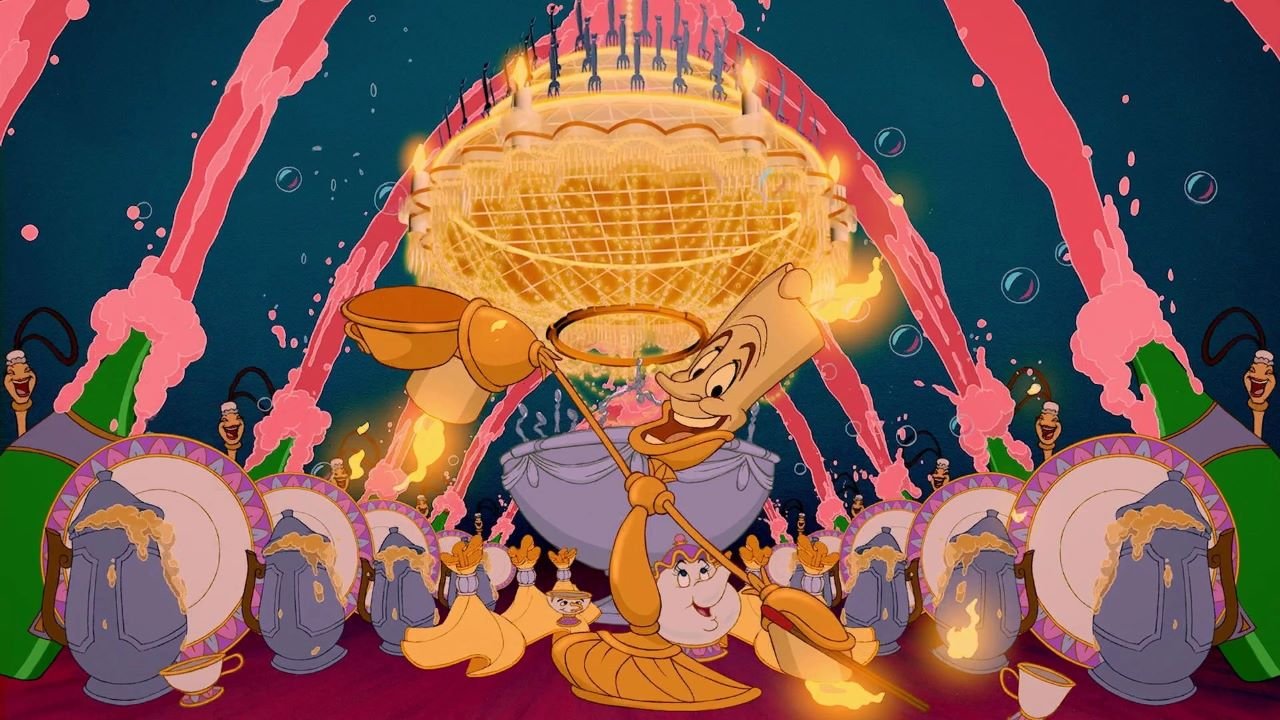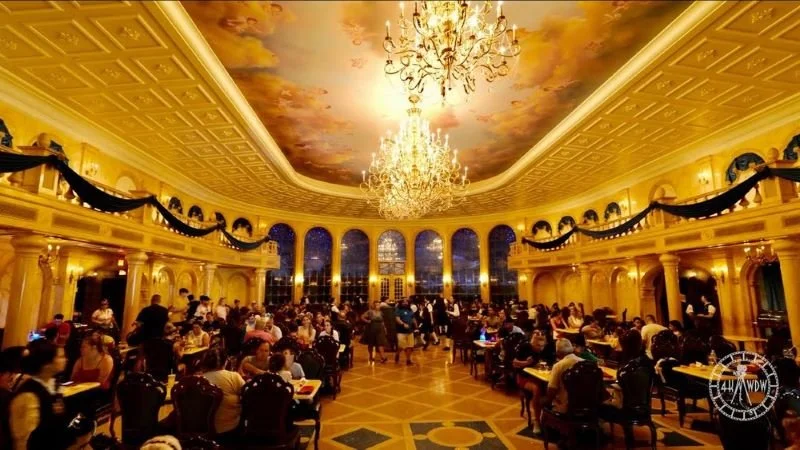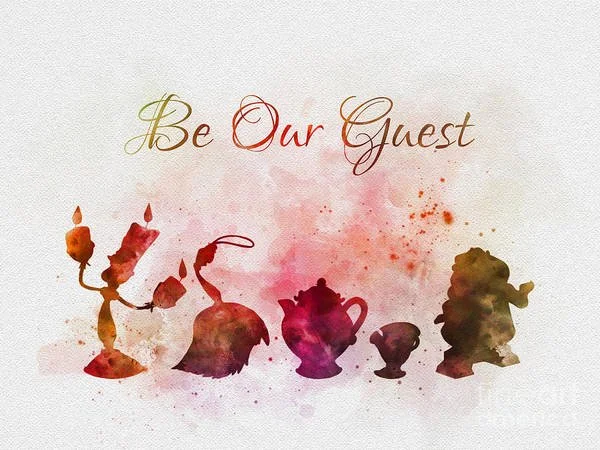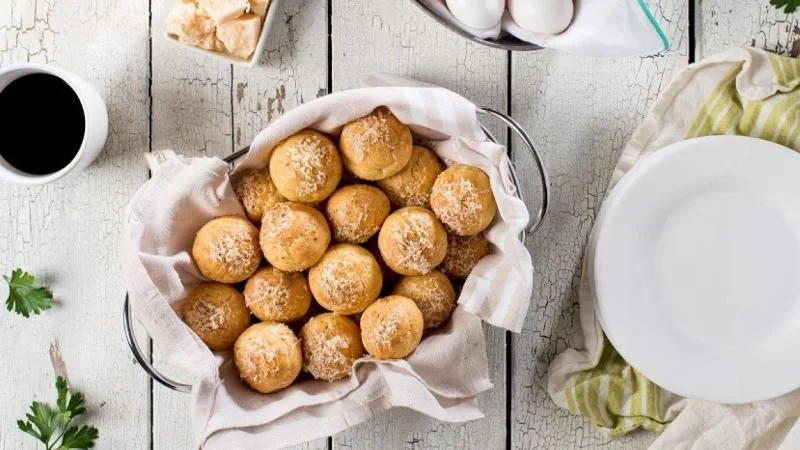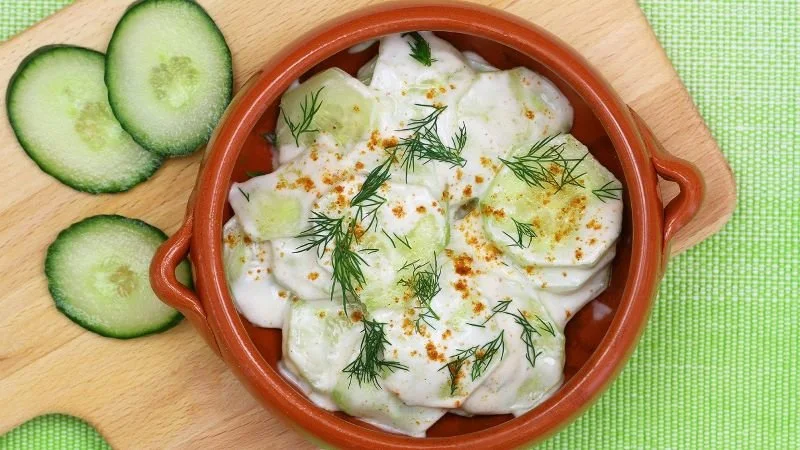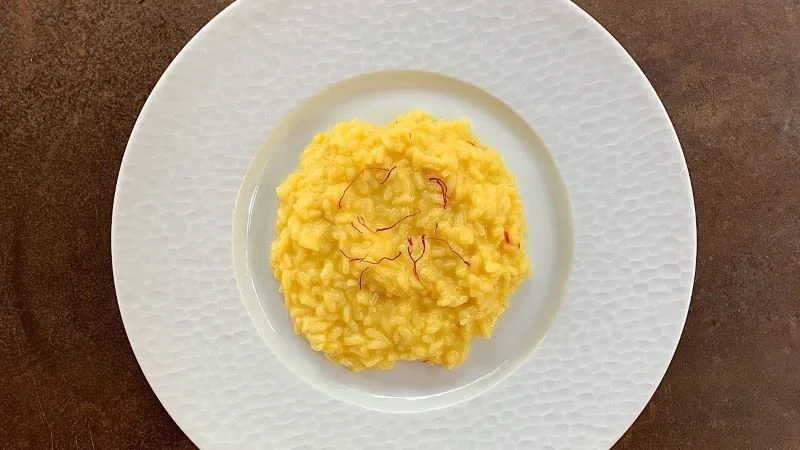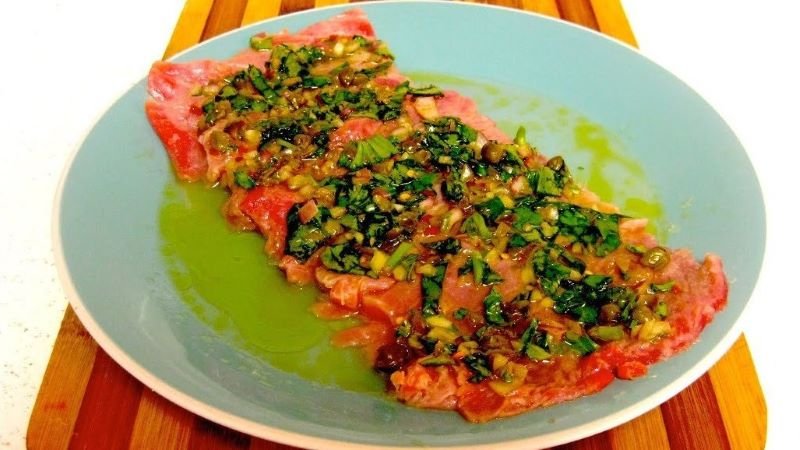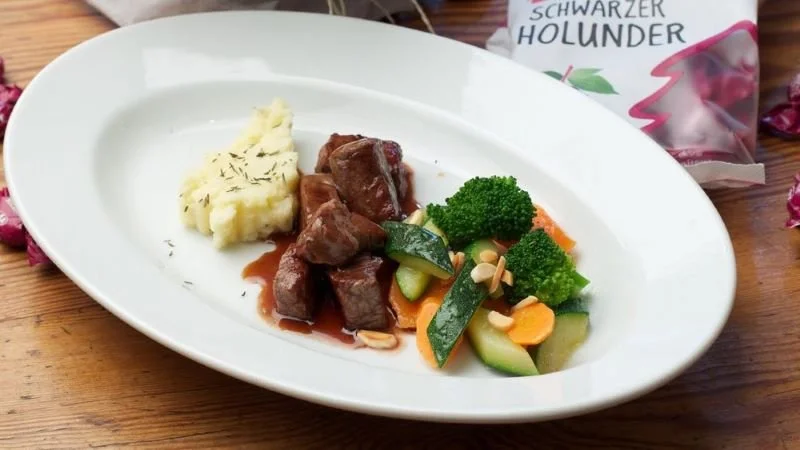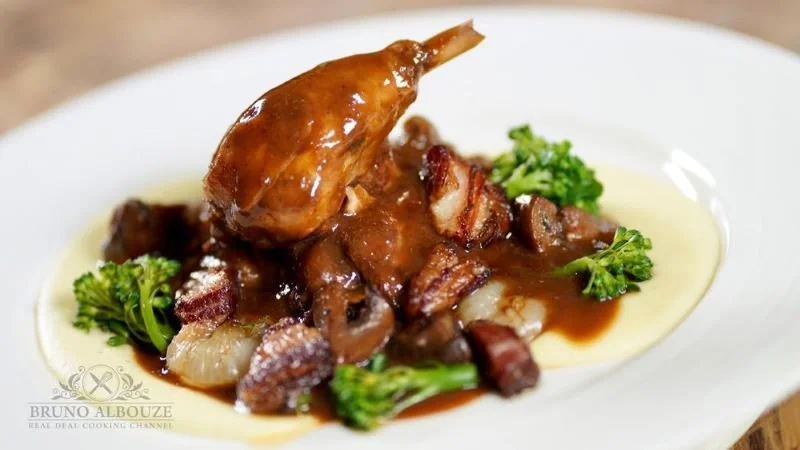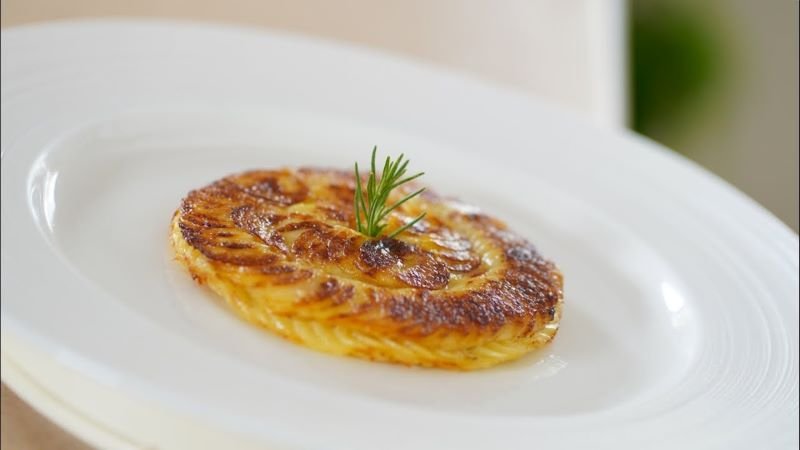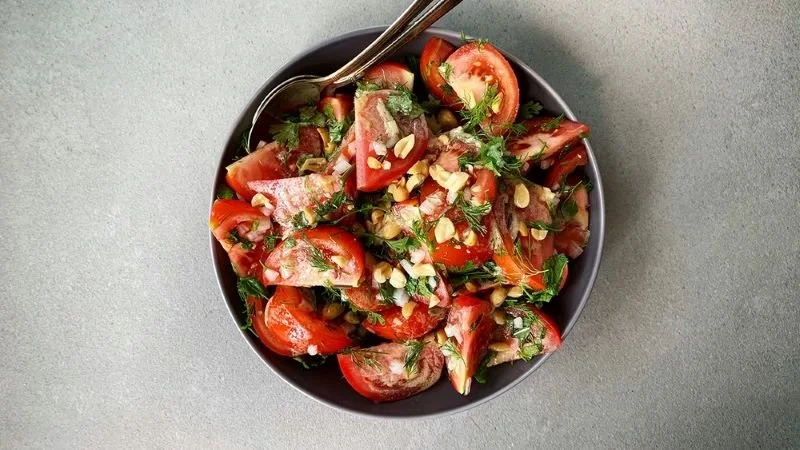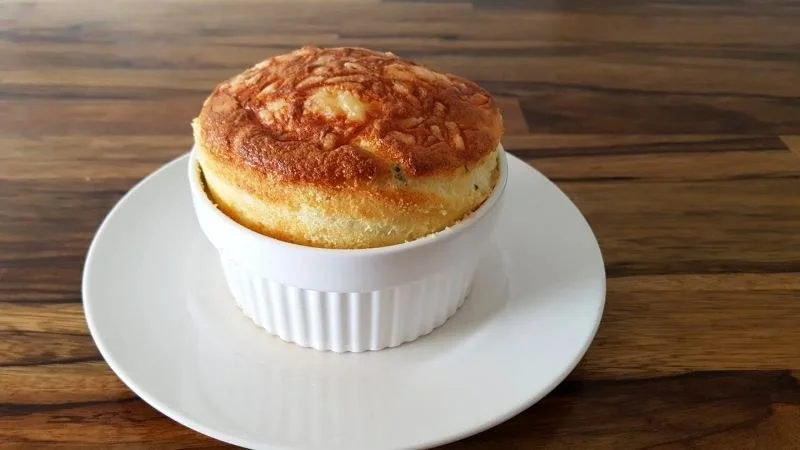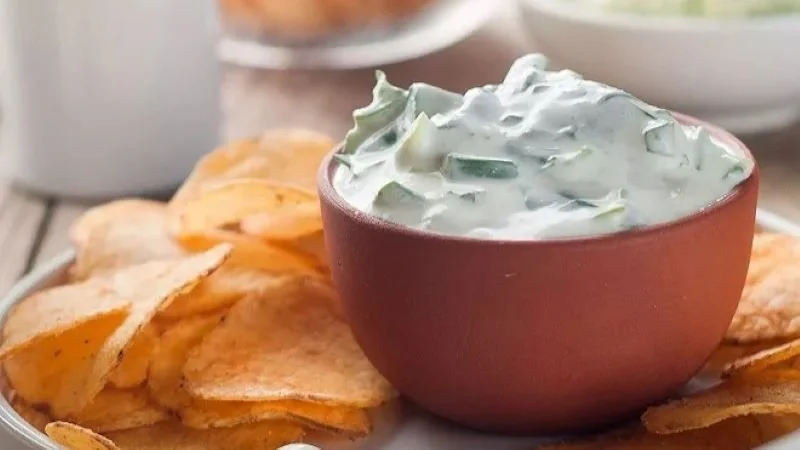Have a Feast Like 'Beauty and the Beast'!
Image Source: Disney Fanon Wiki
For many of us, Beauty and the Beast is our childhood favorite. The 1991 animated film is known for its many musical numbers, the most famous of which is probably the song “Be Our Guest.” This song has endured for decades. According to the Disney wiki, nine different versions have been used across a total of five films, five television shows, nine attractions or stage performances, four video games, and twenty-five musical albums.
Yes, I counted.
“Be Our Guest” takes place while the animated household objects are serving Belle what looks to be a truly impressive feast for dinner. Recently, while watching this scene, it occurred to me that it would be interesting to try and create a feast on the same scale, one that included references to the different versions of the song in some of its courses.
After some research, I found that the most complex of classical French banquets features sixteen courses and accompanying beverages. They are grouped into Starters, Mains I, Mains II, and Afters.
Starters: The appetizer, soup, egg, and pasta/rice courses.
Mains I: The fish and entrée courses. They are followed by a palate cleanser like sorbet.
Mains II: The main meat (Joints) course and the roast, vegetable, salad, and cold buffet courses.
Afters: The sweets, the savory, cheese, and cut fruits and nuts.
RELATED:
This menu takes these courses and blends them with elements from the many different versions of the song “Be Our Guest” and attempts to turn them into a truly one-of-a-kind French banquet. Where possible, it includes dishes from regions that inspired the 1991 film.
Image Source: YouTube
THE MENU
Image Source: Fine Art America
Pre-Banquet
Image Source: Get Cracking
Before you begin, you first have a beverage known as an aperitif and a small nibble. This menu consists of the following:
PASTIS: This anise-flavored spirit also includes hints of licorice root, is low in sugar, and is 40-45% ABV (alcohol by volume).
GOUGERES: These cheese puffs are made in the style of the Burgundy region of France. If you have any leftovers, they freeze quickly for future use.
1st Course: Appetizers
Image Source: YouTube
FLAMMEKUECHE: This dish, also known as tarte flambée, hails from the French region of Alsace, which inspired Belle’s village in the 1991 movie. The tarte flambée, is referenced in the 4th verse of the song.
Image Source: CuisineAZ
CONCOMBRES A LA CRÈME: Literally cucumbers in cream, this simple all-season dish is easy to prepare.
PATE DE FOIES DE VOLAILLE AU CASSIS: This chicken-liver pate links to the demo version of “Be Our Guest.” It is easy to make and just as good as foie gras. You can substitute cognac, port, or sherry for crème de cassis.
2nd Course: Soup
Image Source: Swich
Lumiere refers to “soupe de jour” in the song. This menu offers three options:
FRENCH SPLIT-PEA SOUP: This soup is another dish hailing from the French region of Alsace, and is also loved by French Canadians. It is a fine start for a larger meal and good comfort for cool days. It should be accompanied by a hearty bottle of red wine and a hunk of crusty bread.
PROVENCAL SOUP WITH PISTOU: This pureed soup of potatoes, leeks, and zucchini hails from the French region of Provence and may be served chilled or hot.
FRENCH PEASANT SOUP: This is another hearty soup that is good for cold weather. It combines carrots, potatoes, onions or leeks, and bacon. You can also add whatever vegetables might be in season.
3rd Course: Eggs
Image Source: Get Cracking
This next course is sometimes combined with other courses and is only sometimes defined as a course on its own.
OEUFS AU CAVIAR ROUGE: This easy-to-prepare dish works for brunch, lunch, or the start of a bigger meal. It combines eggs, crème Fraiche or sour cream, lemon, chives, and salmon roe (aka. red caviar). Trout roe can also be used as a less-expensive option.
OEUFS DURS MAYONNAISE: Known in English as hard-boiled eggs with French mayonnaise, this dish tastes best with free-range or organic eggs. Careful boiling is required to ensure their orange-yellow color.
OEUFS MIMOSA: This French version of devilled eggs takes its name from the mimosa tree that grows in the south of France. The traditional ingredient in the tangy filling is parsley sprinkled with crumbled egg yolk to resemble a mimosa tree in bloom.
4th Course: Pasta/Rice
Image Source: YouTube
This course is the result of Italian influences on banquet composition.
RAVIOLIS A LA SAUGE: The best way to prepare this dish is with a cheese-only filling with sage as a garnish. Any other combination with the filling will upset the balance of the ingredients.
RISOTTO AU SAFRAN: This quick and easy recipe can be made in advance if needed. To ensure a creamy dish, you must use Italian risotto rice.
RISOTTO AU CHAMPIGNONS SAUVAGES: This earthy dish may be made with risotto rice but is best made with petit epeautre or einkorn wheat. This gives it a nutty flavor, which combines well with the savory wild mushrooms.
5th Course: Fish
This seafood course is part of the first set of main courses. This menu offers three options:
Image Source: Yummly
TARTARE DU SAUMON: This tartare incorporates salmon, avocado, shallots, cilantro, and coriander, combined with a lime-oil dressing. It is usually a starter but can also work on its own.
COQUES AU SATAY: This dish was originally a French-Asian fusion dish created by a Parisian chef. The resulting recipe is flavorful and easy to make. If cockles are unavailable, they can be substituted with vongole, or tiny clams.
Image Source: YouTube
CARPACCIO DE THON AU CITRON VERT: This simple dish can be prepared whenever. For the best results, the freshest tuna possible should be used.
6th Course: Entrée
This first meat course contains multiple references to “Be Our Guest.” Beef ragout is directly mentioned in the main version of the song, while the chicken is referenced in other versions.
Image Source: YouTube
BEEF RAGOUT: This slow-cooked French-style stew can be made with meat or fish or with vegetables. It can be served on its own or with sides.
Image Source: YouTube
COQ AU VIN: Traditionally made with a rooster, this dish can be made with any top-quality chicken and hearty red wine. The traditional choice is Marc de Bourgogne, and the next best choice is cognac.
POULETTE AU CIDRE: This dish is made by lightly browning the meat in butter, adding mushrooms, onions/shallots, and bacon, then stewing the whole thing in hard cider.
7th Course (Interlude): Sorbet
This menu offers a delicious French Lime Sorbet as a palate cleanser as an interlude before more flavorful courses.
8th Course: Joints
This is the main course of the entire meal. For this menu, we are offering a single option.
Image Source: YouTube
CARRE D’AGNEAU: This roast is very simple to prepare. The key step is that a butcher needs to prepare the roast by exposing the rib ends and removing the bones at the bottom of the rack. This technique is called “Frenching” and makes for easier slicing.
9th Course: Roast
Image Source: CuisineAZ
This meat course often consists of less traditional meats. The two dishes in this menu reference the Broadway version of “Be Our Guest.”
ROAST GOOSE WITH WILD RICE: This dish is very simple to make—just roast the bird. The art comes in what you serve with it. For this menu, it sits nicely on a bed of a grain of wild rice.
CAILLES ROTIES: The oven needs to be very hot when you put the quails in to ensure that they get crisp outside while remaining juicy and tender on the inside. A good step is to perform the technique known as spatchcocking, where each bird is cut open through the backbone and flattened out.
10th Course: Vegetables
For this menu, the vegetable choices have been kept simple to complement the other courses.
Image Source: YouTube
GRATIN SAVOYARD: Originating in the French Alps, this dish works well with varieties like russet potatoes. It is a simple recipe that is best straight out of the oven and goes well alongside roasted meat or poultry.
POELEE DE CHAMPIGNONS DES BOIS: This dish is most tasty with mushroom varieties like chanterelles or porcinis. Since wild mushrooms are highly seasonal, cultivated mushrooms can be used for similar results.
Image Source: Entertaining with Beth
TARTIFLETTE: Preparation is a bit different with this more complex gratin. You boil rather than bake the potatoes, and slab bacon is preferred. You can use any number of cheeses that are available where you live.
11th Course: Salad
Image Source: Mitsou Magazine
The menu offers three options for this course to complement the meal. A version of “Be Our Guest” reference vinaigrette and dancing croutons.
SALADE DE ROQUETTE: This simple salad works just as well with leaves like baby spinach or chicory.
SALADE A L’AIL AUX CROUTONS: This tangy salad gets its taste by bathing the lettuce leaves in a combination of a mustard vinaigrette and chopped garlic. A good enhancement is homemade croutons straight out of the oven.
SALADE DE TOMATES AUX HERBES: This fresh and easy salad can be used as a starter or a vegetable course option. Any tomatoes can be used, but you get the best results with cherry tomatoes. Another fundamental trick is to season the tomatoes right before the salad is served.
12th Course: Cold Buffet
This course closes out the main courses. This menu offers a single, simple option.
ASSIETTE ANGLAISE: Contrary to its name, this is a French dish that works particularly well in summer. The meats featured on the platter can vary widely, but the standard items tend to be the same: mayonnaise, mustard, tiny pickles, and leafy greens.
13th Course: Sweets
Image Source: Pasticceria Papa
This is the first of the courses known as the “Afters.” Lumiere mentions pudding en flambé and “the grey stuff” in the song.
CRÈME BRULEE: This is one of France’s favorite desserts. Preparation is simple if you have the right tools. A small propane torch is required to caramelize the top sugar layer.
MOUSSE AUX CHATAIGNES: This winter dessert takes three hours to prepare. Much of that time is dedicated to letting the mousse set. For efficiency, canned or frozen chestnuts are recommended.
TOWER OF PROFITEROLES AND CHOCOLATE TRUFFLES: This creation will take some time to make, particularly for the cream puffs. For the truffles, their quality will depend highly on the chocolate chosen. If done correctly, the result should be spectacular.
14th Course: Savory
Image Source: YouTube
The first dish in this section references Lumiere’s mention of cheese souffle, while the other two pair well with the tea served by Mrs. Potts.
SOUFFLE AU FROMAGE: This dish is traditionally made with flavorful cheeses from Alpine regions. Similar results can also be achieved with other hard cheeses. The key to success is timing, but one should remember that souffle will inevitably fall on their way to the table.
CAKE AU ROQUEFORT ET AUX NOIX: This cake can be served as a starter or a cocktail nibble and also works as a savory option. The cake comes out of the oven quite tender and needs to cool off completely before slicing.
CAKE APERITIF AUX OLIVES, LARDONS ET PISTACHES: This rich and savory cake pairs well with various spirits. It is also easy to freeze and keep for future occasions.
15th Course: Cheese
Image Source: CuisineAZ
I opted for variety rather than a giant cheese board for this course.
FROMAGE BLANC AUX HERBES: The smooth, creamy cheese blends well with fresh herbs to create a dish that works well every time.
ASSIETTE DE FROMAGES: There are no rules to this cheese platter except that it usually comes towards the end of a meal.
FROMAGE BLANC AUX PISTACHES ET MIEL: Fromage blanc is lighter than sour cream but more decadent than yogurt. This makes for a delicious, healthy, quick, and economical dessert.
16th Course: Cut Fruits And Nuts
The sky is the limit! For this menu, our selection of nuts includes walnuts, pistachios, and roasted chestnuts, and the suggested sliced fruit options, Api Etoile Apple and Charentais Melon, which originate in France.
C’EST FINI!!
READ NEXT:
Source(s): Great Gastro, Atlas Obscura [1], [2], HM Hub, The Every Day French Chef, The Spruce Eats, Wikipedia

